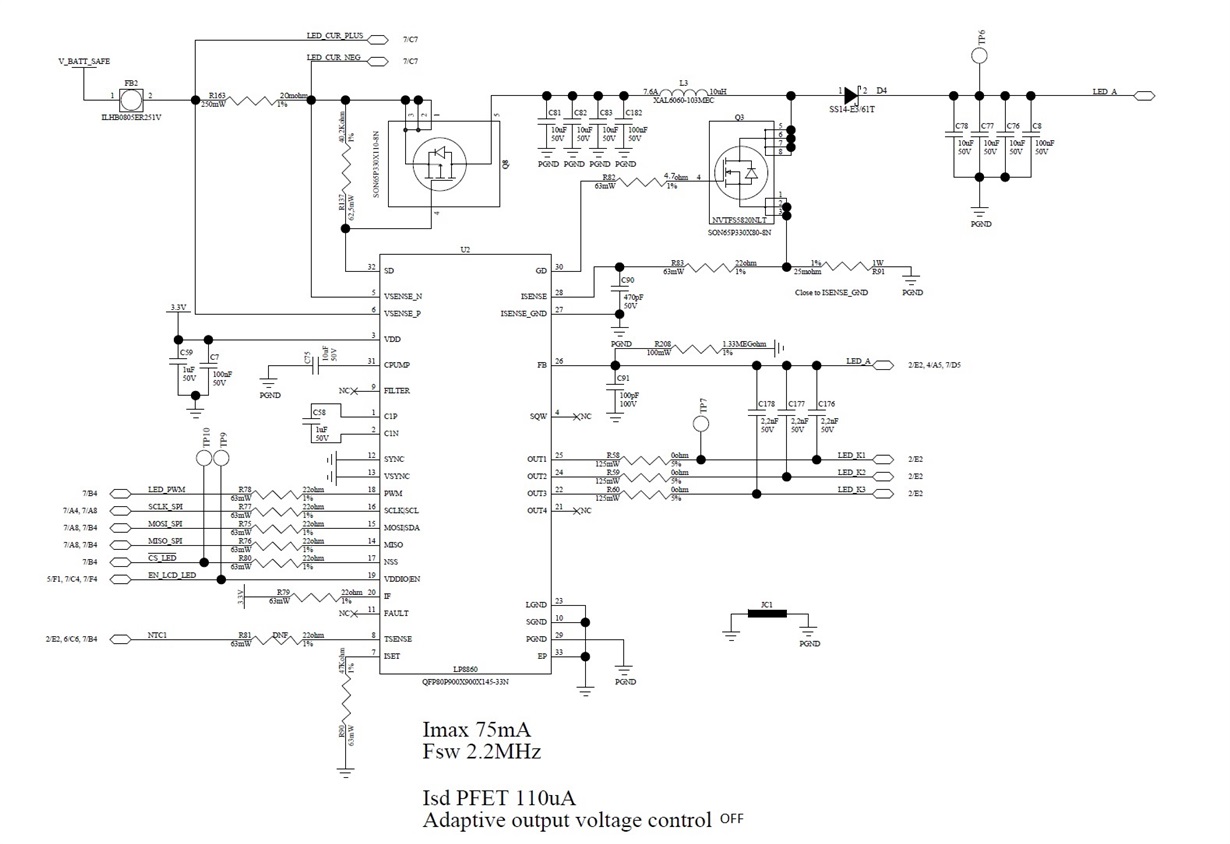Hello to everybody,
I am using LP8860 to drive 3 strings of LED in my design. The schematic can be seen in the attached  figure.
figure.
The input voltage is an automobile battery (13.5V nominal but 4.5 - 24V are also possible).
My load is a fixed number LED, with a abs max voltage of 18.5V and abs max current 65mA per string.
My question is the following. When the input voltage was close to the output voltage for certain loads (for example 24mA per string) i heard audible sound. With the oscilloscope i captured the following signals.
1. The Output voltage (LED_A) ripple (AC coupled)
2. The driving GD signal.
When there was audible sound the output voltage ripple was high.
The driving GD signal was a train of pulses (which made the output voltage go high) and then a long time (about 80usec) there was no switching activity. Then the train of pulses was present once more.
First i would like to ask weather this is a feedback error of not. Could this be characterized as pulse skipping?
Then i changed the boost Pi compensation control, integral and proportional from 2 to 4 and the audible noise was lowered, the ripple too. The train of pulses was more frequent. The time between the train of pulses was lowered to about the half (40usec) for the same load at the same input voltage.
I would like to ask if this could cause a stability problem and how could i test the stability.
Then i was thinking of also lowering the capacity connected to the feedback pin. Could this cause also stability problems?
I have chosen the most short off time and blank time options.
Could you advise any change which could increase stability and decrease ripple?
Thank you in advance,
Orlando Grigoriadis

